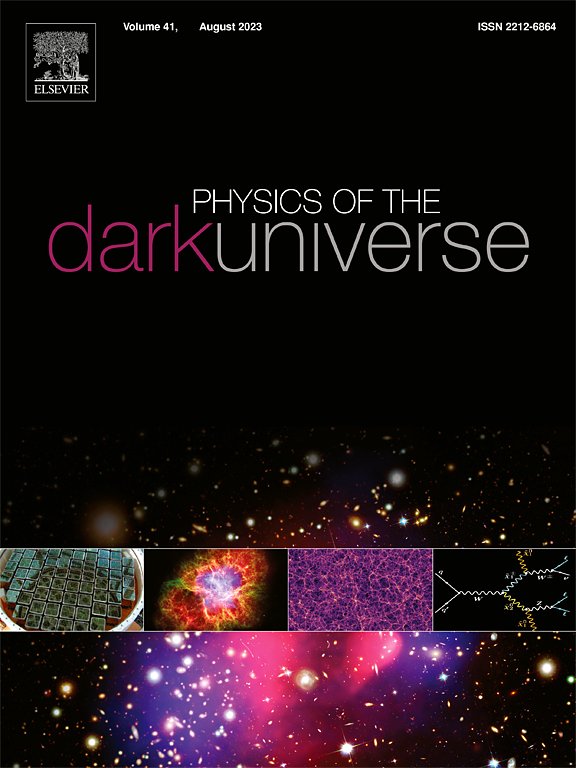Neutrino oscillation measurements with KamLAND and JUNO in the presence of scalar NSI
IF 5
2区 物理与天体物理
Q1 ASTRONOMY & ASTROPHYSICS
引用次数: 0
Abstract
Determination of neutrino mass ordering and precision measurement of neutrino oscillation parameters are the foremost goals of the JUNO experiment. Here, we explore the effects of scalar non-standard interactions (sNSI) on the electron anti-neutrino survival probability measured by JUNO. sNSI appear as corrections to the neutrino mass term in the Hamiltonian. We have considered the simplest scenario where there is only one NSI () present in the theory. Our results show that sNSI can have a significant effect on neutrino oscillation probabilities at the medium- and long-baseline reactor experiments. We fit KamLAND data assuming non-zero sNSI in theory and find that estimates of and from KamLAND deviate significantly from their standard best-fit values if one assumes sNSI in the theory. is allowed by KamLAND. JUNO cannot constrain sNSI but it can robustly measure and even when they differ widely from their current best-fit values. Our work highlights the necessity of global analysis of constraints on sNSI and standard two-flavour oscillation parameters before arduous three-flavour questions such as neutrino mass ordering or CP violation in their presence are attempted.
卡姆兰和朱诺在标量NSI存在下的中微子振荡测量
中微子质量序次的确定和中微子振荡参数的精确测量是JUNO实验的首要目标。在这里,我们探讨了标量非标准相互作用(sNSI)对JUNO测量的电子反中微子存活概率的影响。sNSI是对哈密顿量中中微子质量项的修正。我们考虑了理论中只有一个NSI (ηee)的最简单场景。我们的研究结果表明,在中、长基线反应堆实验中,sNSI对中微子振荡概率有显著影响。我们在理论上假设非零sNSI来拟合KamLAND数据,并发现如果在理论上假设sNSI,那么KamLAND对Δm212and θ12的估计将显著偏离其标准最佳拟合值。ηee∈[−1.0,1.0]是KamLAND允许的。JUNO不能约束sNSI,但它可以稳健地测量Δm212and θ12,即使它们与当前的最佳拟合值相差很大。我们的工作强调了在尝试棘手的三味问题(如中微子质量排序或CP违反)之前,对sNSI和标准双味振荡参数的约束进行全局分析的必要性。
本文章由计算机程序翻译,如有差异,请以英文原文为准。
求助全文
约1分钟内获得全文
求助全文
来源期刊

Physics of the Dark Universe
ASTRONOMY & ASTROPHYSICS-
CiteScore
9.60
自引率
7.30%
发文量
118
审稿时长
61 days
期刊介绍:
Physics of the Dark Universe is an innovative online-only journal that offers rapid publication of peer-reviewed, original research articles considered of high scientific impact.
The journal is focused on the understanding of Dark Matter, Dark Energy, Early Universe, gravitational waves and neutrinos, covering all theoretical, experimental and phenomenological aspects.
 求助内容:
求助内容: 应助结果提醒方式:
应助结果提醒方式:


